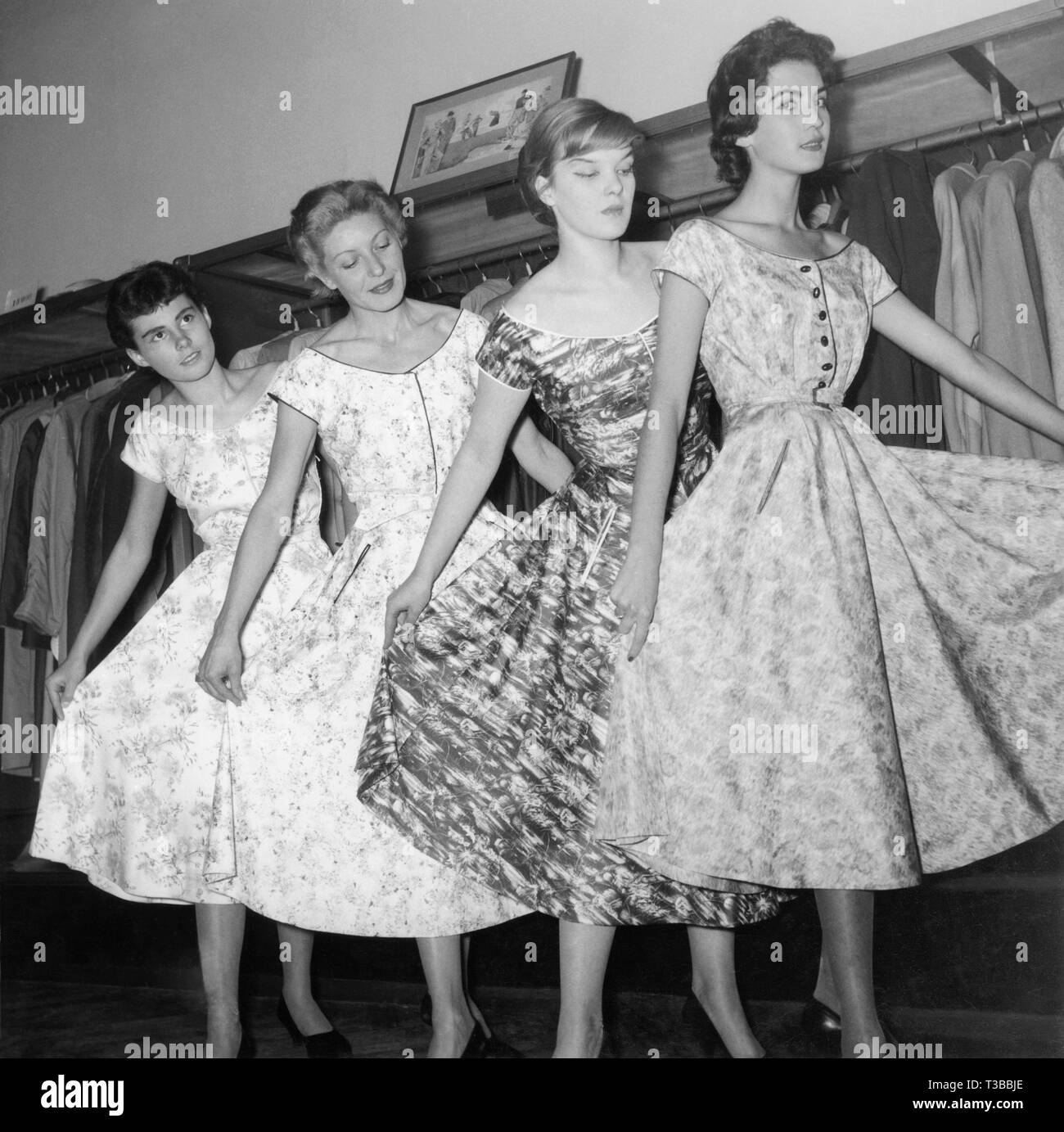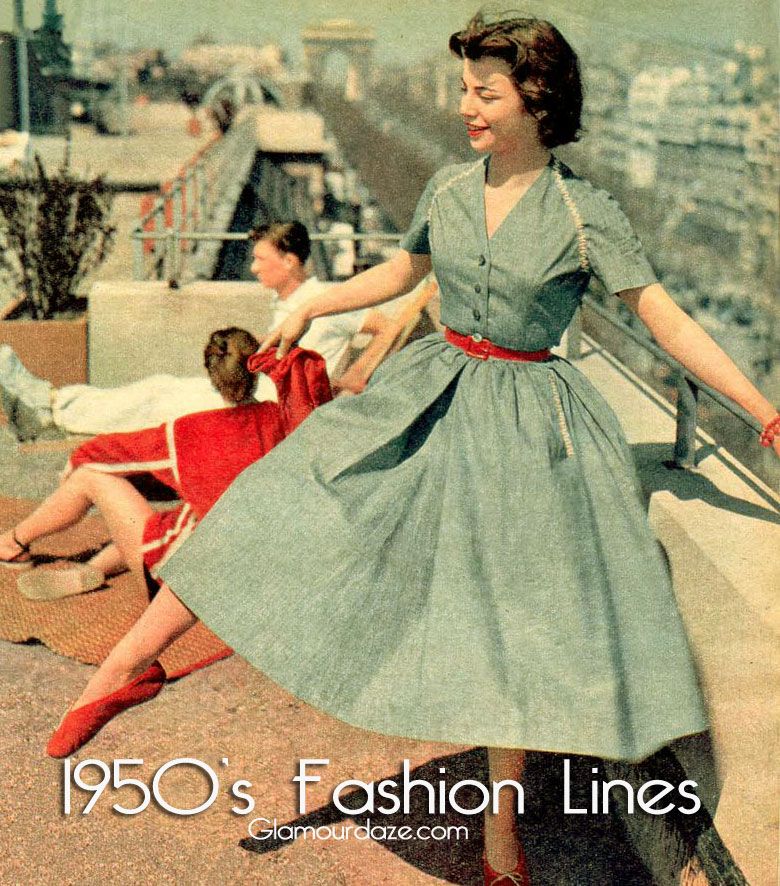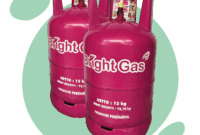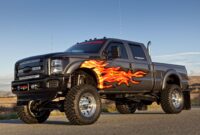The Enduring Appeal of 1950 Panel Trucks: A Journey Through Utility and Nostalgia cars.truckstrend.com
In the vibrant post-World War II era, as economies boomed and suburbs expanded, a particular type of commercial vehicle became an indispensable workhorse for countless businesses across America: the 1950 panel truck. More than just a means of transport, these robust, enclosed utility vehicles were the backbone of local commerce, delivering everything from bread and milk to plumbing supplies and dry cleaning. Today, 1950 panel trucks are cherished classics, celebrated for their iconic design, rugged simplicity, and remarkable versatility, appealing to collectors, restorers, and customizers alike.
At its core, a panel truck is a light-duty commercial vehicle, essentially a pickup truck chassis fitted with a fully enclosed, windowless cargo body in the rear. Unlike traditional vans that might be built on a car platform or have a more integrated unibody construction, panel trucks retained the sturdy, separate frame of their pickup brethren, making them exceptionally durable and capable of handling substantial loads. The 1950s represented a golden age for these vehicles, embodying a perfect blend of utilitarian function and the emerging, distinctive styling cues of mid-century American automotive design.
The Enduring Appeal of 1950 Panel Trucks: A Journey Through Utility and Nostalgia
The Golden Age of Utility: What Defined 1950 Panel Trucks?
The 1950s were a pivotal decade for automotive design and engineering, and panel trucks were no exception. While their primary purpose was functionality, manufacturers began to infuse them with more appealing aesthetics, moving away from purely spartan designs.
Definition and Purpose
The fundamental purpose of a 1950 panel truck was to provide secure, weather-protected transport for goods and equipment. Small businesses – butchers, bakers, florists, plumbers, electricians, and delivery services – relied heavily on these vehicles. Their windowless cargo areas offered privacy for contents and a large, flat surface for advertising and branding, effectively making them mobile billboards. The robust construction allowed them to navigate diverse terrains, from burgeoning urban centers to unpaved rural routes.
Design and Aesthetics
The styling of 1950 panel trucks mirrored the design trends of their pickup truck counterparts. Chevrolet’s "Advance-Design" series (1947-1955), for instance, featured graceful, rounded lines, a wider and lower stance, and a more integrated appearance than earlier models. Ford’s F-Series (introduced in 1948) also embraced a more modern, streamlined look. Common design elements included:
- Distinctive Front Fascia: Large, often chrome-accented grilles, round headlights, and prominent fenders.
- Two-Door Configuration: Most panel trucks were two-door vehicles, with access to the cargo area via large double doors at the rear.
- Enclosed Cargo Area: Completely windowless side panels, providing maximum security and branding space.
- Utilitarian Interior: Simple dashboards, bench seats, and basic instrumentation, prioritizing durability and ease of cleaning over luxury.

Chassis and Powertrain

Underneath their iconic sheet metal, 1950 panel trucks shared mechanical components with their light-duty pickup siblings, ensuring parts availability and straightforward maintenance for the era.
- Chassis: A rugged, ladder-frame chassis provided the strength necessary for commercial hauling.
- Engines: The dominant engine type was the inline-six cylinder, known for its reliability and torque. Chevrolet’s "Thriftmaster" 216 or 235 cubic inch six-cylinder and Ford’s "Flathead Six" or later "Mileage Maker" overhead-valve six were workhorses. V8 engines were less common in light-duty trucks at the very beginning of the decade but gained traction later on (e.g., Ford’s overhead-valve V8 from 1954).
- Transmissions: Most came with manual transmissions, typically a 3-speed column-shift or floor-shift unit. Automatic transmissions were still a luxury and not widely adopted in commercial vehicles of this class until later in the decade or beyond.
- Suspension: Solid front and rear axles with leaf springs provided a robust, albeit firm, ride, designed for carrying loads rather than passenger comfort.

Key Manufacturers and Iconic Models
Several manufacturers produced panel trucks during the 1950s, each offering their unique take on the utilitarian vehicle.
- Chevrolet: The Chevrolet 3100 Series Panel (part of the Advance-Design line) is arguably the most recognizable and sought-after 1950 panel truck. Its classic lines and widespread availability make it a favorite for restoration and customization.
- Ford: Ford’s F-1 Series Panel truck, a counterpart to the popular F-Series pickups, was equally prevalent. Known for their durability, these Fords are also highly popular among collectors.
- Dodge: Dodge offered its B-Series and later C-Series panel trucks, known for their rugged construction and distinctive "Pilot-House" cab design in the early 50s. While less common than Chevy or Ford, they have a dedicated following.
- GMC: Sharing platforms with Chevrolet, GMC panel trucks often featured slightly different trim and sometimes unique engine options, appealing to those seeking something a bit less common.
- Other Manufacturers: Studebaker, Willys, and International Harvester also produced capable and distinctive panel trucks, though in smaller numbers, making them rarer finds today.
Why Own a 1950 Panel Truck Today? Benefits and Applications
The appeal of these vintage utility vehicles extends far beyond mere nostalgia. Owning a 1950 panel truck offers a unique blend of benefits and opportunities.
- Unmatched Aesthetics and Nostalgia: These trucks are undeniable head-turners. Their classic lines evoke a simpler time, drawing attention and sparking conversations wherever they go.
- Practicality and Versatility: Even today, their large, enclosed cargo area remains highly practical. They are ideal for transporting gear to car shows, hauling supplies for home projects, or even serving as a unique "shop truck" for a business.
- Customization Potential: The robust, body-on-frame construction and ample interior space make 1950 panel trucks a blank canvas for customization. They are incredibly popular for hot-rodding, resto-mods (restoration with modern upgrades), lowriders, and custom paint jobs.
- Marketing and Branding: For businesses, a well-restored or customized panel truck can be an incredibly effective mobile advertising tool, generating buzz and brand recognition that traditional vehicles simply cannot.
- Investment Potential: While not guaranteed, well-preserved, original, or professionally restored examples can appreciate in value, making them a potentially sound classic car investment.
Considerations Before Buying: What to Look For
Purchasing a 1950 panel truck is an exciting endeavor, but it requires careful consideration. These vehicles are over 70 years old, and their condition can vary wildly.
- Rust, Rust, Rust: This is the primary enemy of vintage vehicles. Thoroughly inspect the frame, floorboards, rocker panels, cab corners, fender wells, and door bottoms for signs of rust. Surface rust is manageable; structural rust requires extensive and costly repair.
- Mechanical Condition: Assess the engine, transmission, brakes, and suspension. Are they original? Are they functional? Are there any major leaks or unusual noises? Factor in the cost of potential rebuilds or replacements.
- Completeness: Missing trim pieces, glass, interior components, or specific body parts can be incredibly difficult and expensive to source. The more complete the vehicle, the better.
- Documentation: A clear title is paramount. Research the vehicle’s history if possible.
- Your Purpose and Budget: Are you looking for a full restoration project, a driver-quality vehicle, or a basis for a custom build? This will dictate the initial purchase price and subsequent investment. A cheap "barn find" can quickly become a money pit if you’re not prepared for extensive work.
Restoration and Modernization: Tips and Challenges
Bringing a 1950 panel truck back to life, whether for historical accuracy or modern performance, is a rewarding but challenging journey.
Tips for Restoration
- Plan Thoroughly: Before turning a single wrench, decide on your end goal. Concourse restoration? Driver? Resto-mod? This dictates your budget, parts sourcing, and required skills.
- Research Parts Availability: For common models like the Chevy 3100 or Ford F-1, many reproduction body panels, trim pieces, and mechanical components are available from specialty suppliers. For rarer models, parts hunting can be a significant challenge.
- Join Enthusiast Communities: Online forums, social media groups, and local classic car clubs are invaluable resources for advice, parts leads, and moral support.
- Prioritize Safety Upgrades: If planning to drive regularly, consider upgrading brakes (disc brake conversion), steering (power steering), and potentially adding seatbelts and modern lighting.
Common Modernization Challenges and Solutions
- Lack of Power and Speed: Original engines are reliable but slow by modern standards. Solution: Engine swaps are common, often to a small-block Chevy 350 V8 or a modern LS-series engine for vastly improved power, reliability, and fuel economy.
- Poor Ride Quality and Handling: Solid axles and leaf springs provide a bouncy, rough ride. Solution: Upgrading to independent front suspension (IFS) kits and modern rear suspension setups (e.g., four-link with coil-overs) dramatically improves ride comfort and handling.
- Ineffective Brakes: Original drum brakes are adequate for the period but lack stopping power for modern traffic. Solution: Disc brake conversions are one of the most popular and recommended safety upgrades.
- No creature Comforts: No A/C, poor heating, minimal insulation. Solution: Aftermarket HVAC systems, sound deadening, and modern seating can transform the driving experience.
- Wiring Issues: Original wiring is old and often unreliable. Solution: Complete rewiring with a modern fuse box and wiring harness is a crucial safety and reliability upgrade.
Concluding Summary
The 1950 panel truck is far more than a vintage utility vehicle; it is a cultural icon, a symbol of post-war American industry, and a versatile canvas for personal expression. From their rugged beginnings as indispensable commercial workhorses to their current status as cherished classics, these trucks embody durability, distinctive style, and a timeless appeal. Whether meticulously restored to original glory, transformed into a powerful hot rod, or customized as a unique business promotion tool, the 1950 panel truck continues to capture imaginations. Owning one is not just about acquiring a vehicle; it’s about preserving a piece of history, embracing a lifestyle, and enjoying the journey of bringing a legend back to life.
1950 Panel Trucks: Estimated Price Guide
Please note: Prices for classic vehicles are highly fluid and depend on numerous factors. This table provides general ranges based on typical market conditions and should be used as a guide only. Always conduct thorough research, get a pre-purchase inspection, and consider the specific make, model, and rarity.
| Condition Category | Description




